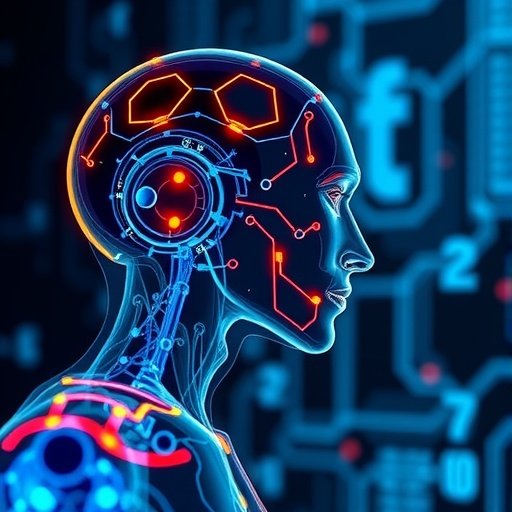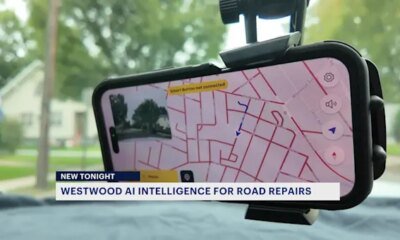AI Research
How LLMs Are Forcing Us to Redefine Intelligence

There is an old saying: If it looks like a duck, swims like a duck, and quacks like a duck, then it probably is a duck. This simple way of reasoning, often linked to the Indiana poet James Whitcomb Riley, has shaped how we think about artificial intelligence for decades. The idea that behavior is enough to identify intelligence inspired Alan Turing’s famous “Imitation Game,” now called the Turing Test.
Turing suggested that if a human cannot tell whether they are conversing with a machine or another human, then the machine can be said to be intelligent. Both the duck test and the Turing test suggest that what matters is not what lies inside a system, but how it behaves. For decades, this test has guided advances in AI. But, with the arrival of large language models (LLMs), the situation has changed. These systems can write fluent text, hold conversations, and solve tasks in ways that feel remarkably human. The question is no longer whether machines can mimic human conversation, but whether this imitation is true intelligence. If a system can write like us, reason like us, and even create like us, should we call it intelligent? Or is behavior alone no longer enough to measure intelligence?
The Evolution of Machine Intelligence
Large language models have changed how we think about AI. These systems, once limited to generating basic text responses, can now solve logic problems, write computer code, draft stories, and even assist with creative tasks like screenwriting. One key development in this progress is their ability to solve complex problems through step-by-step reasoning, a method known as Chain-of-thought reasoning. By breaking down a problem into smaller parts, an LLM can solve complex math problems or logical puzzles in a way that looks similar to human problem-solving. This capability has enabled them to match or even surpass human performance on advanced benchmarks like MATH or GSM8K. Today, LLMs also possess multimodal capabilities. They can work with images, interpret medical scans, explain visual puzzles, and describe complex diagrams. With these advances, the question is no longer whether LLMs can mimic human behavior, but whether this behavior reflects genuine understanding.
Traces of Human-Like Thinking
This success of LLMs is redefining the way we understand intelligence. The focus is shifting from aligning behavior of AI with humans, as suggested by Turing test, to exploring how closely LLMs mirror human thinking in the way they process information (i.e. true human-like thinking). For example, in a recent study, researchers compared the internal workings of AI models with human brain activity. The study found that LLMs with over 70 billion parameters, not only achieved human-level accuracy but also organized information internally in ways that matched human brain patterns.
When both humans and AI models worked on pattern recognition tasks, brain scans showed similar activity patterns in the human participants and corresponding computational patterns in the AI models. The models clustered abstract concepts in their internal layers in ways that directly matched with human brain wave activity. This suggests that successful reasoning might require similar organizational structures, whether in biological or artificial systems.
However, researchers are careful to note the limitations of this work. The study involved a relatively small number of human participants, and humans and machines approached the tasks differently. Humans worked with visual patterns while the AI models processed text descriptions. The correlation between human and machine processing is intriguing, but it does not prove that machines understand concepts the same way humans do.
There are also clear differences in performance. While the best AI models approached human-level accuracy on simple patterns, they showed more dramatic performance drops on the most complex tasks compared to human participants. This suggests that despite similarities in organization, there may still be fundamental differences in how humans and machines process difficult abstract concepts.
The Skeptical Perspective
Despite these impressive findings, a strong argument suggests that the LLMs are nothing more than a very skilled mimic. This view comes from philosopher John Searle’s “Chinese Room” thought experiment which illustrate why behavior may not equal to understanding.
In this thought experiment, Searle asks us to imagine a person locked in a room and can speaks only English. The person receives Chinese symbols and use an English rulebook to manipulate these symbols and produce responses. From outside the room, his responses look exactly like those of a native Chinese speaker. However, Searle argues that the person understands nothing about Chinese. He simply follow rules without any real understanding.
Critics apply this same logic to LLMs. They argue these systems are “stochastic parrots” that generate responses based on statistical patterns in their training data, not genuine understanding. The term “stochastic” refers to their probabilistic nature, while “parrot” emphasizes their imitative behavior without real understanding.
Several technical limitations of LLMs also support this argument. LLMs frequently generate “hallucinations“; responses that look plausible but completely incorrect, misleading and nonsensical. This happens because they select statistically plausible words rather than consulting an internal knowledge base or understanding truth and falsehood. These models also reproduce human-like errors and biases. They get confused by irrelevant information that humans would easily ignore. They exhibit racial and gender stereotypes because they learned from data containing these biases. Another revealing limitation is “position bias,” where models overemphasize information at the beginning or end of long documents while neglecting the middle content. This “lost-in-the-middle” phenomenon suggests that these systems process information very differently from humans, who can maintain attention across entire documents.
These limitations highlight a central challenge: while LLMs excel at recognizing and reproducing language patterns, this does not mean they truly understand meaning or real-world context. They perform well at handling syntax but remain limited when it comes to semantics.
What Counts as Intelligence?
The debate ultimately comes down to how we define intelligence. If intelligence is the capacity to generate coherent language, solve problems, and adapt to new situations, then LLMs already meet that standard. However, if intelligence requires self-awareness, genuine understanding, or subjective experience, these systems still fall short.
The difficulty is that we lack a clear or objective way to measure qualities like understanding or consciousness. In both humans and machines, we infer them from behavior. The duck test and the Turing Test once provided elegant answers, but in the age of LLMs, they may no longer suffice. Their capabilities force us to reconsider what truly counts as intelligence and whether our traditional definitions are keeping pace with technological reality.
The Bottom Line
Large language models challenge how we define AI intelligence. They can mimic reasoning, generate ideas, and perform tasks once seen as uniquely human. Yet they lack the awareness and grounding that shape true human-like thinking. Their rise forces us to ask not only whether machines act intelligently, but what intelligence itself really means.
AI Research
AI-powered research training to begin at IPE for social science scholars

Hyderabad: The Institute of Public Enterprise (IPE), Hyderabad, has launched a pioneering 10-day Research Methodology Course (RMC) focused on the application of Artificial Intelligence (AI) tools in social science research. Sponsored by the Indian Council of Social Science Research (ICSSR), Ministry of Education, Government of India, the program commenced on October 6 and will run through October 16, 2025, at the IPE campus in Osmania University.
Designed exclusively for M.Phil., Ph.D., and Post-Doctoral researchers across social science disciplines, the course aims to equip young scholars with cutting-edge AI and Machine Learning (ML) skills to enhance research quality, ethical compliance, and interdisciplinary collaboration. The initiative is part of ICSSR’s Training and Capacity Building (TCB) programme and is offered free of cost, with travel and daily allowances reimbursed as per eligibility.
The course is being organized by IPE’s Centre for Data Science and Artificial Intelligence (CDSAI), under the academic leadership of Prof. S Sreenivasa Murthy, Director of IPE and Vice-Chairman of AIMS Telangana Chapter. Dr. Shaheen, Associate Professor of Information Technology & Analytics, serves as the Course Director, while Dr. Sagyan Sagarika Mohanty, Assistant Professor of Marketing, is the Co-Director.
Participants will undergo hands-on training in Python, R, Tableau, and Power BI, alongside modules on Natural Language Processing (NLP), supervised and unsupervised learning, and ethical frameworks such as the Digital Personal Data Protection (DPDP) Act, 2023.
The curriculum also includes field visits to policy labs like T-Hub and NIRDPR, mentorship for research proposal refinement, and guidance on publishing in Scopus and ABDC-indexed journals.
Speaking about the program, Dr. Shaheen emphasized the need for social scientists to evolve beyond traditional methods and embrace computational tools for data-driven insights.
“This course bridges the gap between conventional research and emerging technologies, empowering scholars to produce impactful, ethical, and future-ready research,” she said.
Seats for the course are allocated on a first-come, first-served basis. The last date for nominations is September 15, 2025. With its unique blend of technical training, ethical grounding, and publication support, the RMC at IPE intends to take a significant step to empower scholars in the process of modernizing social science research in India.
Interested candidates can contact: Dr Shaheen, Programme Director, at [email protected] or on mobile number 9866666620.
AI Research
New AI study aims to predict and prevent sinkholes in Tennessee’s vulnerable roadways

CHATTANOOGA, Tenn — A large sinkhole that appeared on Chattanooga’s Northshore after last month’s historic flooding is just the latest example of roadway problems that are causing concern for drivers.
But a new study looks to use artificial intelligence (AI) to predict where these sinkholes will appear before they do any damage.
“It’s pretty hard to go about a week without hearing somebody talking about something going wrong with the road.”
According to the American Geoscience Institute, sinkholes can have both natural and artificial causes.
However, they tend to occur in places where water can dissolve bedrock, making Tennessee one of the more sinkhole prone states in the country.
Brett Malone, CEO of UTK’s research park, says…
“Geological instability, the erosions, we have a lot of that in East Tennessee, and so a lot of unsteady rock formations underground just create openings that then eventually sort of cave in.”
Sinkholes like the one on Heritage Landing Drive have become a serious headache for drivers in Tennessee.
Nearby residents say its posed safety issues for their neighborhood.
Now, UTK says they are partnering with tech company TreisD to find a statewide solution.
The company’s AI technology could help predict where a sinkhole forms before it actually happens.
“You can speed up your research. So since we’ve been able to now use AI for 3D images, it means we get to our objective and our goals much faster.”
TreisD founder Jerry Nims says their AI algorithm uses those 3D images to study sinkholes in the hopes of learning ways to prevent them.
“If you can see what you’re working with, the experts, and they can gain more information, more knowledge, and it’ll help them in their decision making.”
We asked residents in our area, like Hudson Norton, how they would feel about a study like this in our area.
“If it’s helping people and it can save people, then it sounds like a good use of AI, and responsible use of it, more importantly.”
Chattanooga officials say the sinkhole on Heritage Landing Drive could take up to 6 months to repair.
AI Research
New Study Reveals Challenges in Integrating AI into NHS Healthcare

Implementing artificial intelligence (AI) within the National Health Service (NHS) has emerged as a daunting endeavor, revealing significant challenges rarely anticipated by policymakers and healthcare leaders. A recent peer-reviewed qualitative study conducted by researchers at University College London (UCL) sheds light on the complexities involved in the procurement and early deployment of AI technologies tailored for diagnosing chest conditions, particularly lung cancer. The study surfaces amidst a broader national momentum aimed at integrating digital technology within healthcare systems as outlined in the UK Government’s ambitious 10-year NHS plan, which identifies digital transformation as pivotal for enhancing service delivery and improving patient experiences.
As artificial intelligence gains traction in healthcare diagnostics, NHS England launched a substantial initiative in 2023, whereby AI tools were introduced across 66 NHS hospital trusts, underpinned by a notable funding commitment of £21 million. This ambitious project aimed to establish twelve imaging diagnostic networks that could expand access to specialist healthcare opinions for a greater number of patients. The expected functionalities of these AI tools are significant, including prioritizing urgent cases for specialist review and assisting healthcare professionals by flagging abnormalities in radiological scans—tasks that could potentially ease the burden on overworked NHS staff.
However, two key aspects have emerged from this research, revealing that the rollout of AI systems has not proceeded as swiftly as NHS leadership had anticipated. Building on evidence gleaned from interviews with hospital personnel and AI suppliers, the UCL team identified procurement processes that were unanticipatedly protracted, with delays stretching from four to ten months beyond initial schedules. Strikingly, by June 2025—18 months post-anticipated completion—approximately a third of the participating hospital trusts had yet to integrate these AI tools into clinical practice. This delay emphasizes a critical gap between the technological promise of AI and the operational realities faced by healthcare institutions.
Compounding these challenges, clinical staff equipped with already high workloads have found it tough to engage wholeheartedly with the AI project. Many staff members expressed skepticism about the efficacy of AI technologies, rooted in concerns about their integration with existing healthcare workflows, and the compatibility of new AI tools with aging IT infrastructures that vary widely across numerous NHS hospitals. The researchers noted that many frontline workers struggled to perceive the full potential of AI, especially in environments that overly complicated the procurement and implementation processes.
In addition to identifying these hurdles, the study underscored several factors that proved beneficial in the smooth embedding of AI tools. Enthusiastic and committed local hospital teams played a significant role in facilitating project management, and strong national leadership was critical in guiding the transition. Hospitals that employed dedicated project managers to oversee the implementation found their involvement invaluable in navigating bureaucratic obstacles, indicating a clear advantage to having directed oversight in challenging integrations.
Dr. Angus Ramsay, the study’s first author, observed the lessons highlighted by this investigation, particularly within the context of the UK’s push toward digitizing the NHS. The study advocates for a recalibrated approach towards AI implementation—one that considers existing pressures within the healthcare system. Ramsay noted that the integration of AI technologies, while potentially transformative, requires tempered expectations regarding their ability to resolve deep-rooted challenges within healthcare services as policymakers might wish.
Throughout the evaluation, which spanned from March to September of last year, the research team analyzed how different NHS trusts approached AI deployment and their varied focal points, such as X-ray and CT scanning applications. They observed both the enthusiasm and the reluctance among staff to adapt to this novel technology, with senior clinical professionals expressing reservations over accountability and decision-making processes potentially being handed over to AI systems without adequate human oversight. This skepticism highlighted an urgent need for comprehensive training and guidance, as current onboarding processes were often inadequate for addressing the query-laden concerns of employees.
The analysis conducted by the UCL-led research team revealed that initial challenges, such as the overwhelming amount of technical information available, hampered effective procurement. Many involved in the selection process struggled to distill and comprehend essential elements contained within intricate AI proposals. This situation suggests the utility of establishing a national shortlist of approved AI suppliers to streamline procurement processes at local levels and alleviate the cognitive burdens faced by procurement teams.
Moreover, the emergence of widespread enthusiasm in some instances provided a counterbalance to initial skepticism. The collaborative nature of the imaging networks was particularly striking; team members freely exchanged knowledge and resources, which enriched the collective expertise as they navigated the implementation journey. The fact that many hospitals had staff committed to fostering interdepartmental collaboration made a substantial difference, aiding the mutual learning process involved in the integration of AI technologies.
One of the most pressing findings from the study was the realization that AI is unlikely to serve as a “silver bullet” for the multifaceted issues confronting the NHS. The variability in clinical requirements among the numerous organizations that compose the NHS creates an inherently complicated landscape for the introduction of diagnostic tools. Professor Naomi Fulop, a senior author of the study, emphasized that the diversity of clinical needs across numerous agencies complicates the implementation of diagnostic systems that can cater effectively to everyone. Lessons learned from this research will undoubtedly inform future endeavors in making AI tools more accessible while ensuring the NHS remains responsive to its staff and patients.
Moving forward, an essential next step will involve evaluating the use of AI tools post-implementation, aiming to understand their impact once they have been fully integrated into clinical operations. The researchers acknowledge that, while they successfully captured the procurement and initial deployment stages, further investigation is necessary to assess the experiences of patients and caregivers, thereby filling gaps in understanding around equity in healthcare delivery with AI involvement.
The implications of this study are profound, shedding light on the careful considerations necessary for effective AI introduction within healthcare systems, underscoring the urgency of embedding educational frameworks that equip staff not just with operational knowledge, but with an understanding of the philosophical, ethical, and practical nuances of AI in medicine. This nuanced understanding is pivotal as healthcare practitioners prepare for a future increasingly defined by technological integration and automation.
Faculty members involved in this transformative study, spanning various academic and research backgrounds, are poised to lead this critical discourse, attempting to bridge the knowledge gap that currently exists between technological innovation and clinical practice. As AI continues its trajectory toward becoming an integral part of healthcare, this analysis serves as a clarion call for future studies that prioritize patient experience, clinical accountability, and healthcare equity in the age of artificial intelligence.
Subject of Research: AI tools for chest diagnostics in NHS services.
Article Title: Procurement and early deployment of artificial intelligence tools for chest diagnostics in NHS services in England: A rapid, mixed method evaluation.
News Publication Date: 11-Sep-2025.
Web References: –
References: –
Image Credits: –
Keywords
AI, NHS, healthcare, diagnostics, technology, implementation, policy, research, patient care, digital transformation.
Tags: AI integration challenges in NHS healthcareAI tools for urgent case prioritizationartificial intelligence in lung cancer diagnosiscomplexities of AI deployment in healthcareenhancing patient experience with AIfunding for AI in NHS hospitalshealthcare technology procurement difficultiesNHS digital transformation initiativesNHS imaging diagnostic networksNHS policy implications for AI technologiesrole of AI in improving healthcare deliveryUCL research on AI in healthcare
-

 Business2 weeks ago
Business2 weeks agoThe Guardian view on Trump and the Fed: independence is no substitute for accountability | Editorial
-
Tools & Platforms4 weeks ago
Building Trust in Military AI Starts with Opening the Black Box – War on the Rocks
-

 Ethics & Policy2 months ago
Ethics & Policy2 months agoSDAIA Supports Saudi Arabia’s Leadership in Shaping Global AI Ethics, Policy, and Research – وكالة الأنباء السعودية
-

 Events & Conferences4 months ago
Events & Conferences4 months agoJourney to 1000 models: Scaling Instagram’s recommendation system
-

 Jobs & Careers2 months ago
Jobs & Careers2 months agoMumbai-based Perplexity Alternative Has 60k+ Users Without Funding
-

 Education2 months ago
Education2 months agoMacron says UK and France have duty to tackle illegal migration ‘with humanity, solidarity and firmness’ – UK politics live | Politics
-

 Education2 months ago
Education2 months agoVEX Robotics launches AI-powered classroom robotics system
-

 Podcasts & Talks2 months ago
Podcasts & Talks2 months agoHappy 4th of July! 🎆 Made with Veo 3 in Gemini
-

 Funding & Business2 months ago
Funding & Business2 months agoKayak and Expedia race to build AI travel agents that turn social posts into itineraries
-

 Podcasts & Talks2 months ago
Podcasts & Talks2 months agoOpenAI 🤝 @teamganassi





















